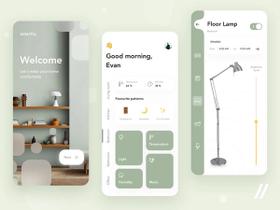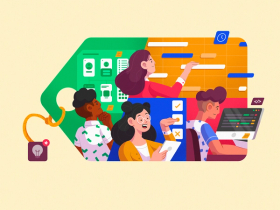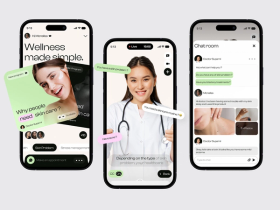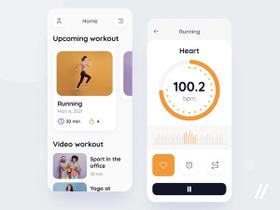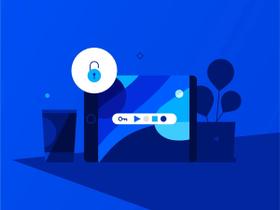Examples of IoT in Healthcare: Applications, Use Cases
Published: January 2, 2025
29 min read
In this article, you'll learn:
1
📈 IoT in Healthcare Market Overview
2
❓ How Does IoT in Healthcare Work?
3
🤔 Pros/Cons of IoT in Healthcare
4
💪 Challenges of Internet of Things in Healthcare
5
📄 IoT in Healthcare: Use Cases
6
🤖 IoT Healthcare Devices and Tech Stack Examples
7
🏥 How to Choose Suitable IoT Healthcare Providers?
8
💼 IoT in the Healthcare Industry: Our Expertise
9
❓ FAQs on IoT in Healthcare
10
💡 Takeaways
The Internet of Things has much to offer to many industries, with healthcare being amongst the ones that benefit the most. It’s probably not the variety of devices themselves, but rather how useful and multi-purpose is IoT in healthcare.
Take heart rate tracking devices, a key component of IoMT. They’re suitable for private use while exercising, for example. Hospitals and physicians can also use them to track their patients’ well-being and health state. Moreover, health insurance companies can tailor their insurance plans to the needs of their clients if users decide to share such data. This data-sharing aspect is especially relevant when you build a health insurance mobile app that integrates wearable device information for personalized care.
So, whatever business you have, it’s likely that you can use IoT healthcare devices to provide better services. Luckily, you don’t have to bother building your own IoT device — there are hundreds of third-party providers you can partner with.

The integration of IoT in healthcare offers numerous benefits, including improved patient monitoring, enhanced treatment outcomes, and streamlined health care processes (image by Arounda UI/UX)
In this article, we’ll talk about how the Internet of Things can be used in the healthcare market, what it “brings to the table” to businesses in the industry, and what providers of devices and APIs there are. Additionally, we’ll talk about our expertise with IoT healthcare devices and answer some of the most popular questions on this topic! 🚀
📈 IoT in Healthcare Market Overview
The Internet of Things and healthcare market, along with IoT and agriculture, is rapidly developing due to technological advancements, growing demand for remote monitoring, and the need for cost-effective solutions. Based on MarketsandMarkets data, let's take a closer look at IoT's current state and future prospects in the healthcare market.
As mentioned, the IoT and healthcare market is experiencing significant growth. From 2023 to 2028, the global IoT market in healthcare is expected to increase from $127.7 billion to $289.2 billion, with a compound annual growth rate (CAGR) of 17.8% over five years.
Several factors contribute to this impressive growth:
- rising adoption of IoMT (Internet of Medical Things);
- focus on patient-centric care;
- technological advancements.
But, there are also challenges that you may face in this market, such as:
- outdated infrastructure;
- data security issues;
- high implementation costs.
In this article, we’ll also help you avoid these problems. Keep reading!
❓ How Does IoT in Healthcare Work?
Healthcare IoT system is a multi-staged process consisting of device deployment, data digitization, cloud migration, and insight extraction, a structure often mirrored in IoT for manufacturing to improve productivity and reduce downtime.
Step 1: Deployment of Interconnected Devices
This is the first part of the process where we deploy health IoT devices such as wearable sensors, actuators, monitors, detectors, and cameras throughout the healthcare setting. These instruments collect data from patients, healthcare institutions, and medical devices.

The deployment of interconnected devices used in healthcare has revolutionized patient monitoring and treatment (image by Reka Rahayu)
Step 2: Data Digitization
Analog data from IoT devices used in healthcare, such as heart signals, mobility metrics, or environmental conditions, is collected and converted into a digital format. This step is crucial for ensuring the processing and analysis of the data.
Step 3: Cloud Migration
After the data is digitized, it undergoes preprocessing and standardization processes that make it suitable for analysis. The data is then moved to a cloud data center, which makes it easy to scale the storage and access from anywhere, enabling remote monitoring and analysis.

In the healthcare app, users can securely access and update their electronic health records, ensuring seamless continuity of care (image by Stav D.)
Step 4: Insight Extraction
This final step involves applying sophisticated analytics to the processed data to develop relevant insights. Healthcare providers can use this information for various purposes, including diagnosis, real-time patient monitoring, and intelligent treatment protocols. This capability can contribute to more patient-focused care through targeted and speedy interventions.
These steps collectively create an opportunity for the Internet of Things in healthcare to deliver many advantages, such as precise patient tracking, better disease management, and optimized healthcare facilities.
Nonetheless, privacy, data security, and integration of existing healthcare systems must also be addressed to maximize the benefits of the IoT in a healthcare setting.
Looking to develop a robust IoT solution for healthcare? Contact us to build scalable and secure systems tailored to your unique needs!
🤔 Pros/Cons of IoT in Healthcare
The implementation of the Internet of Things in the medical field has clear benefits. Let's examine them in more detail with the help of our UI/UX Designer, Iryna Ponomarenko 👇

Imagine a world where you don’t need to visit a doctor to check health conditions. Rather, people with heart failure, asthma, or diabetes could live their best lives and control their health status without noticing.
And this isn’t Sci-Fi—this is our nearest future. But as impressive as it sounds, IoT in healthcare has its pros and cons.
Iryna Ponomarenko, UI/UX Designer @ Stormotion
Advantages
- Diagnosing. Ingestible sensors can identify disease warnings early.
- Monitoring. Blood pressure, glucose level, and heartbeat speed trackers can help people control their health state.
- Remoteness. You don’t need to wait for an ambulance anymore. Sensors and gadgets can send body conditions to your doctor to get a fast answer with recovery steps.
- Affordability. IoT healthcare is cheaper than conventional healthcare in hospitals.
Disadvantages
- Lack of trust. Some patients are afraid to delegate their health to gadgets.
- No tolerance for imperfection. The stakes are high — we can’t afford mistakes in algorithms when someone’s life is on the line.
- Need for balance. Inventing new tech can be long and expensive — at the same time, the final product must be affordable for most patients.
With all its pros and cons, we, at Stormotion, strongly believe that IoT is moving healthcare in the right direction.
💪 Challenges of Internet of Things in Healthcare
While IoT implementation in healthcare is beneficial, it also presents limitations and challenges.
Data Security and Privacy
IoT devices in healthcare sometimes don’t conform to data protocols and standards, resulting in data loss through theft or privacy breaches. These devices contain information that is constantly under assault by cybercriminals, leading to fraudulent acts.
📌 One way to mitigate security risks is through frequent code updates for IoT, ensuring that vulnerabilities are patched and data protection measures remain robust.
While IoT implementation in healthcare is beneficial, it also presents limitations and challenges. If you build a fitness tracker app, ensuring data accuracy and privacy is crucial to maintaining user trust.
Integration
The absence of a collective opinion among device manufacturers regarding how communication protocols and standards should be adopted has led to different ecosystems of IoT devices. Overcoming this limitation helps to build up IoT data aggregation and scalability in healthcare.

The app's integrated tracking and analysis features significantly enhance patient outcomes by monitoring progress and adapting treatment plans accordingly (image by Renalda Aji)
Data Overload and Accuracy
The monstrous quantity of IoT-generated data should be gathered and examined to be true. Due to varying data and communication protocols across different institutions, it becomes challenging to utilize them effectively, which in turn impacts decision-making in the applications of IoT in healthcare.
Cost
Although the initial introduction of IoT to healthcare is costly, the gains in terms of time and resource savings, effective processes, and income generation can be enormous if the implementation addresses actual issues that need a solution.
While IoT in healthcare offers immense potential, it comes with significant challenges, including data security, integration issues, data overload, and high initial costs. Addressing these limitations is crucial to fully unlocking the benefits of IoT and ensuring better healthcare outcomes.
📄 IoT in Healthcare: Use Cases
The Internet of Things has 4 primary areas of use in the healthcare industry:
- patients’ private use;
- physicians;
- hospitals;
- insurance companies.
Additionally, we'll explore compelling IoT use cases in healthcare for each of these scenarios.
📌 Whether it's remote patient monitoring, hospital automation, or insurance data analytics, develop IoT applications tailored to meet the specific needs of healthcare providers and organizations.

IoT in healthcare offers advantages such as real-time monitoring of patient vitals, enabling predictive medicine, and enhancing overall patient care (image by Awsmd)
IoT for Patients’ Private Use
This group of users mostly benefits from small wearable devices in IoT that they carry around or have on throughout the day without experiencing major inconveniences. For example, bands and bracelets, rings, headbands, glucometers, or maybe even subdermal devices.
The main health metrics that can be tracked, including in women's health tracking app development, are heart rate, blood pressure, glucose levels, various activity tracking like steps and walking distance, calorie count, etc.
Apart from that, patients can also use such devices to oversee their elderly relatives. For example, if they require urgent medical attention and nobody’s around to notice it, the device notifies users about the issue so they take action accordingly.
There are also patients with chronic medical conditions like asthma, diabetes, or even Parkinson's. They benefit from IoT healthcare devices a lot since they help with tracking the course of the condition and thus, help to improve treatment.
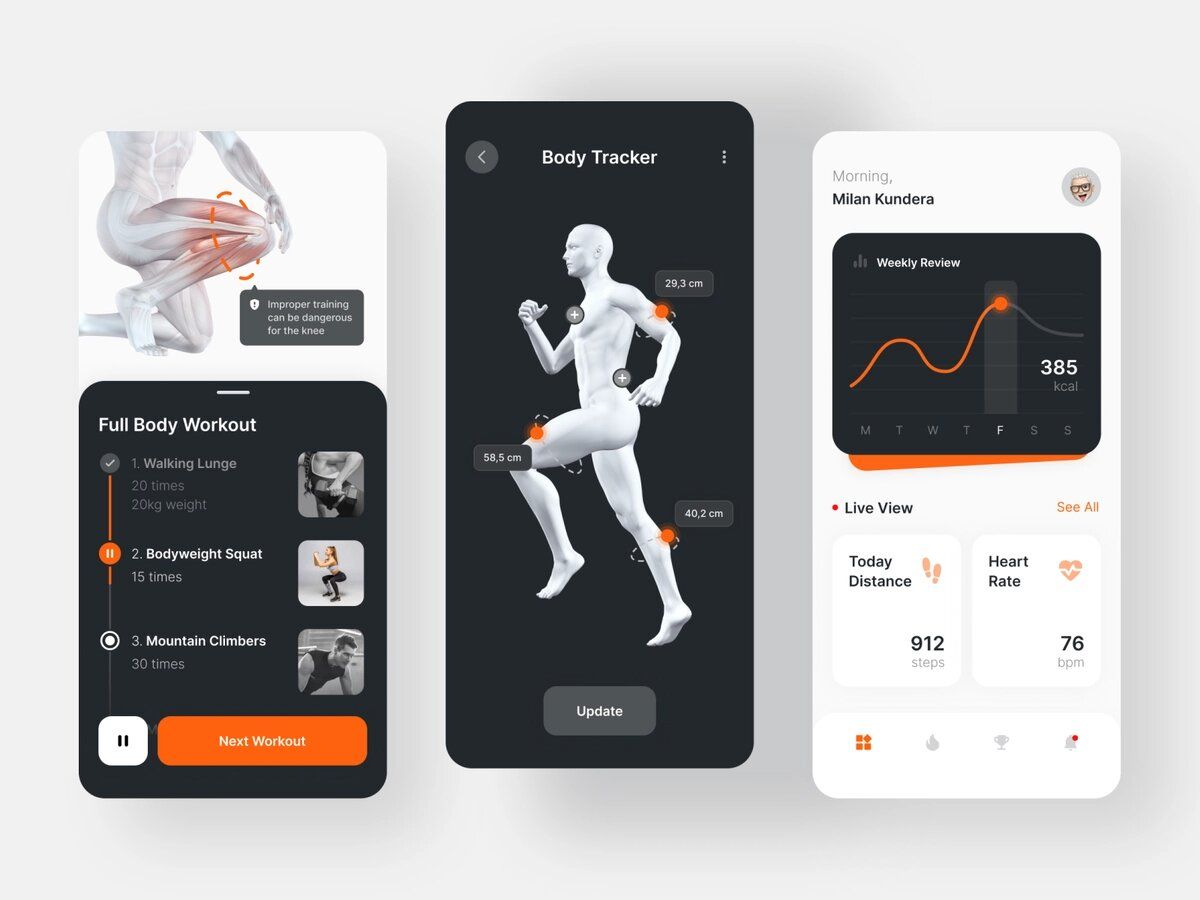
People can access their personal health information through IoT devices (image by Phuong Nguyen)
Private usage is closely connected with fitness and exercising, making it essential to understand how to create a fitness app that customizes workouts using these metrics. We have a separate article dedicated to the IoT in the fitness industry if you’d like to learn more specifics about the topic:
Let’s take a look at the first case study of how IoT healthcare devices can be privately used:
QardioCore: Case Study |
|---|
This device is designed for people to monitor their health conditions (chronic or acute conditions). It’s great for private use since people can simply tie it around their chest and wear it anywhere from a gym to an office. The functionality includes monitoring indicators like blood pressure, levels of cholesterol, etc. Additionally, users can set up automatic data transmission to healthcare institutions they go to without having to book physical appointments. |
IoT for Healthcare Professionals
Another target audience of IoT healthcare devices is medical professionals who use such devices in their work. Surely, the main purpose of it is remote monitoring (for example, home monitoring systems) of the patients.
With their help, they can track how patients’ bodies respond to certain treatments, whether or not it has any damaging side effects, etc. Practically, it's a 24/7 overview of patients’ health, and you can develop a physical therapy app to ensure everything goes as prescribed.
Additionally, physicians can get notified if a patient requires immediate medical help. Take a stroke, for example. Often, such a condition occurs without people noticing it at all, but a high-quality IoT healthcare device can track even the smallest abnormalities and report them to physicians.
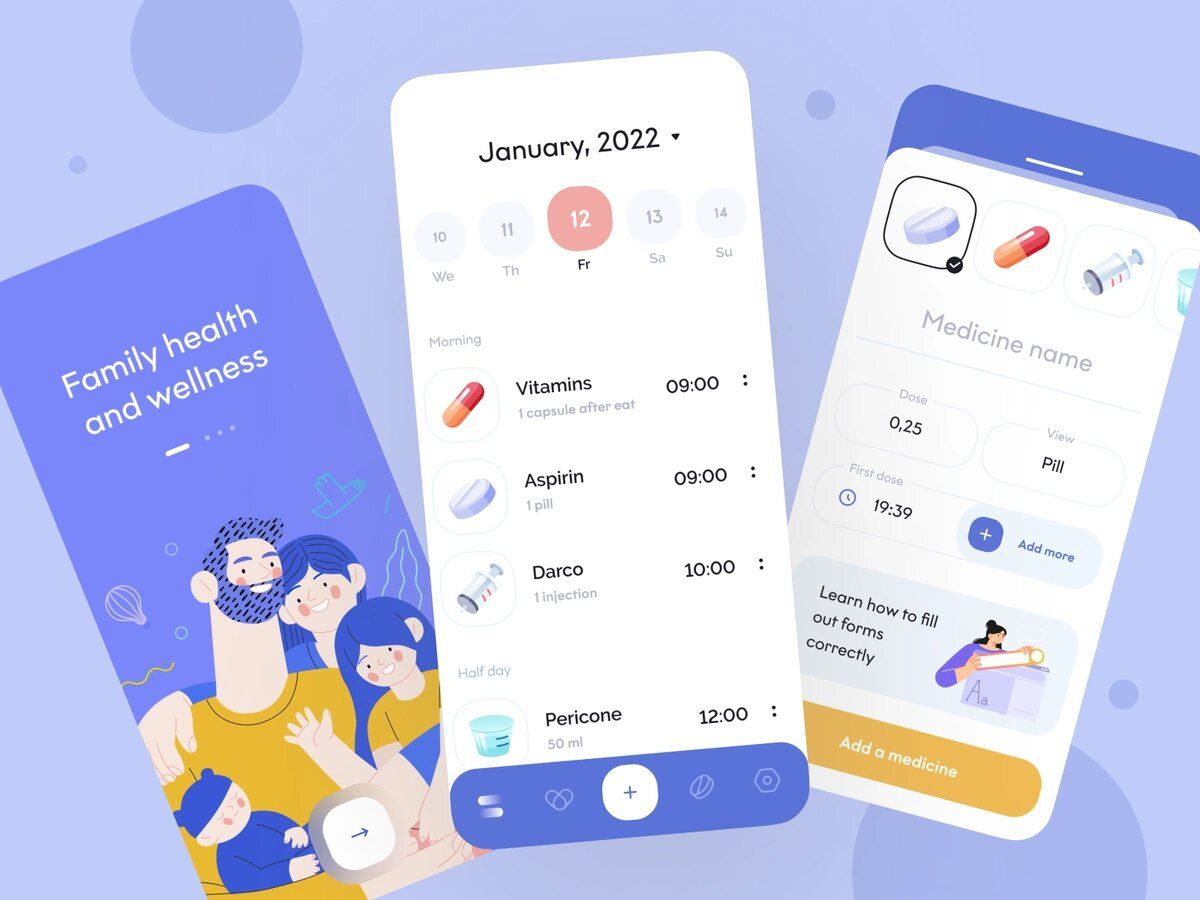
Many healthcare professionals use patient data from IoT-based devices to enhance their services (image by Anastasia Golovko)
Physicians or nurses can also use the devices to remind patients to take medications in case they forget about them. For example, if a patient forgets to tick off a certain meds intake and the doctor notices it, they can send them an additional reminder through a dedicated app (which a lot of IoT devices come with to enable the device’s control).
Surely, there are also devices for automated patient onboarding, which includes getting to know patients’ medical history, navigating through clinics’ services and available medical procedures, billing them for services, performing medical insurance-related operations, etc.
One of the examples of IoT in healthcare is how healthcare professionals can use wearable alarms:
CarePredict Tempo: Case Study |
|---|
This wearable device is tailored for home care settings, often used by nurses or caregivers who look after seniors. It’s typically worn on the wrist and functions as a smart monitoring system. The device tracks daily activity patterns, including walking, sitting, eating, or sleeping. If a caregiver’s patient deviates from their usual behavior — like spending too much time in bed, skipping meals, or showing signs of restlessness — the Tempo sends an alert to the caregiver via an app. Additionally, the device can detect falls, providing immediate notifications to the medical staff for prompt intervention. |
IoT for Hospitals
Hospitals can enhance patient care and operational efficiency through companion application development, utilizing IoT devices in ways that are uniquely beneficial to hospital settings. They can use IoT solutions in healthcare to keep track of medical equipment and hospital machinery using IoT devices with location-tracking functionality. Plus, such devices can be attached to wheelchairs to ensure the security of those patients who use them.
Such devices are useful for organizational purposes since a lot of them are targeted at automating managerial tasks like registering people entering the hospital, tracking employees working hours, etc.
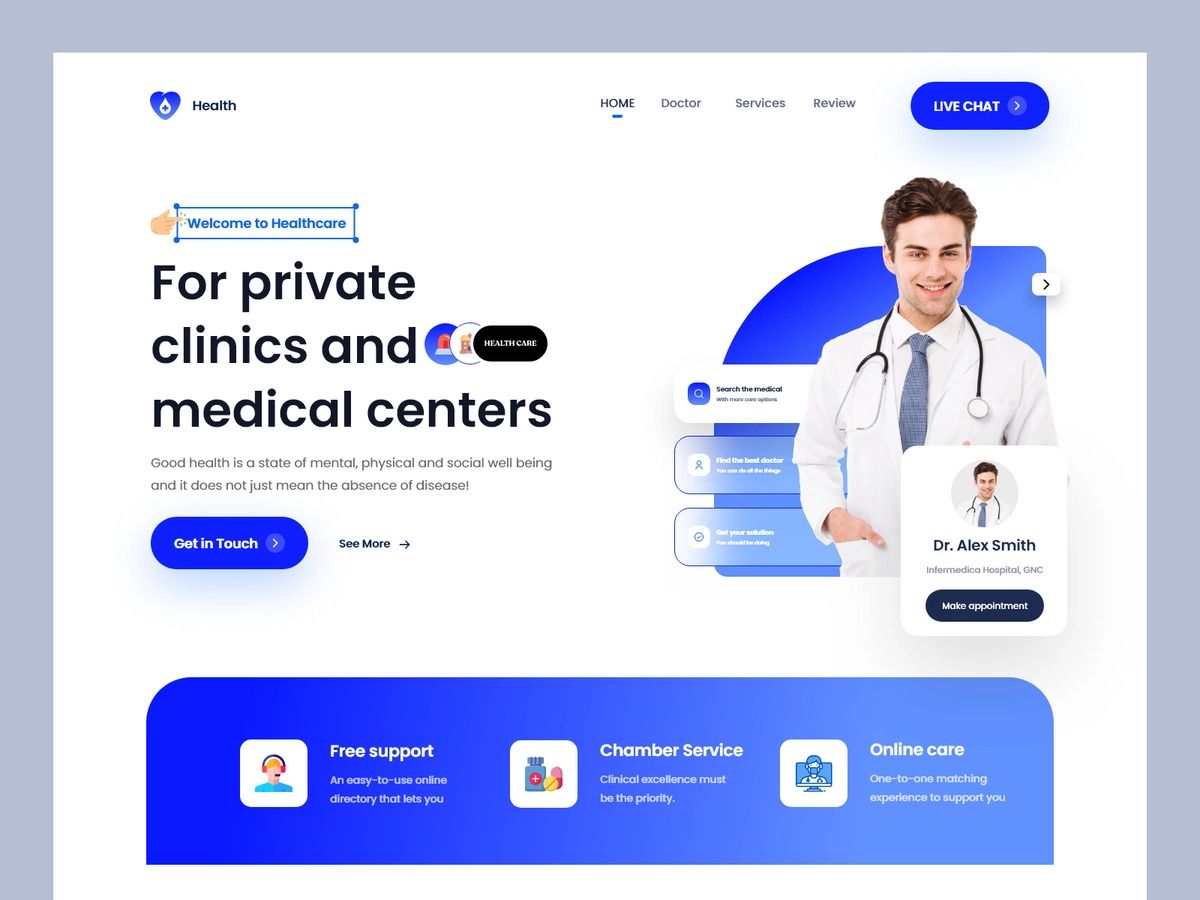
IoT healthcare solutions are highly beneficial for hospitals, as they enable remote patient monitoring (image by Masud Rana)
Another major use case of IoT for healthcare is hygiene control and monitoring. This means that whenever there’s a spread of any infection, concentration of bacteria, or lapses in hand hygiene, IoT devices with scanners can detect these issues and notify employees.
Last but not least, such devices, including robotic systems, can be used for pharmacy inventory control and environmental management, such as keeping track of drugs, checking temperatures in refrigerators or other temperature-dependent machines, controlling humidity, and more.
Let’s take a look at a fascinating IoT device used in healthcare that’s perfectly suitable for hospitals:
Masimo Radius Tº: Case Study |
|---|
Hospitals often use it to monitor post-operative patients, manage infections, or track temperature trends in critical care units. The device provides real-time data and sends alerts to medical staff if a patient’s temperature deviates from the norm. Its wireless design reduces patient discomfort and improves mobility, making it ideal for both inpatient and outpatient settings. |
IoT for Health Insurance Companies
In healthcare app development, clients’ health data collected via IoT devices can be strategically used by insurers for various purposes. It’s useful for underwriting treatments and processing claims. This is a great way to make sure that there’s no fraud from the side of clients.
However, it’s important here to still provide needed medical attention since not every condition can be detected by smart devices. Even though the implementation of Internet of Things technologies for healthcare would bring transparency to the insurance company-client relationship, each body is unique and requires a personalized approach.
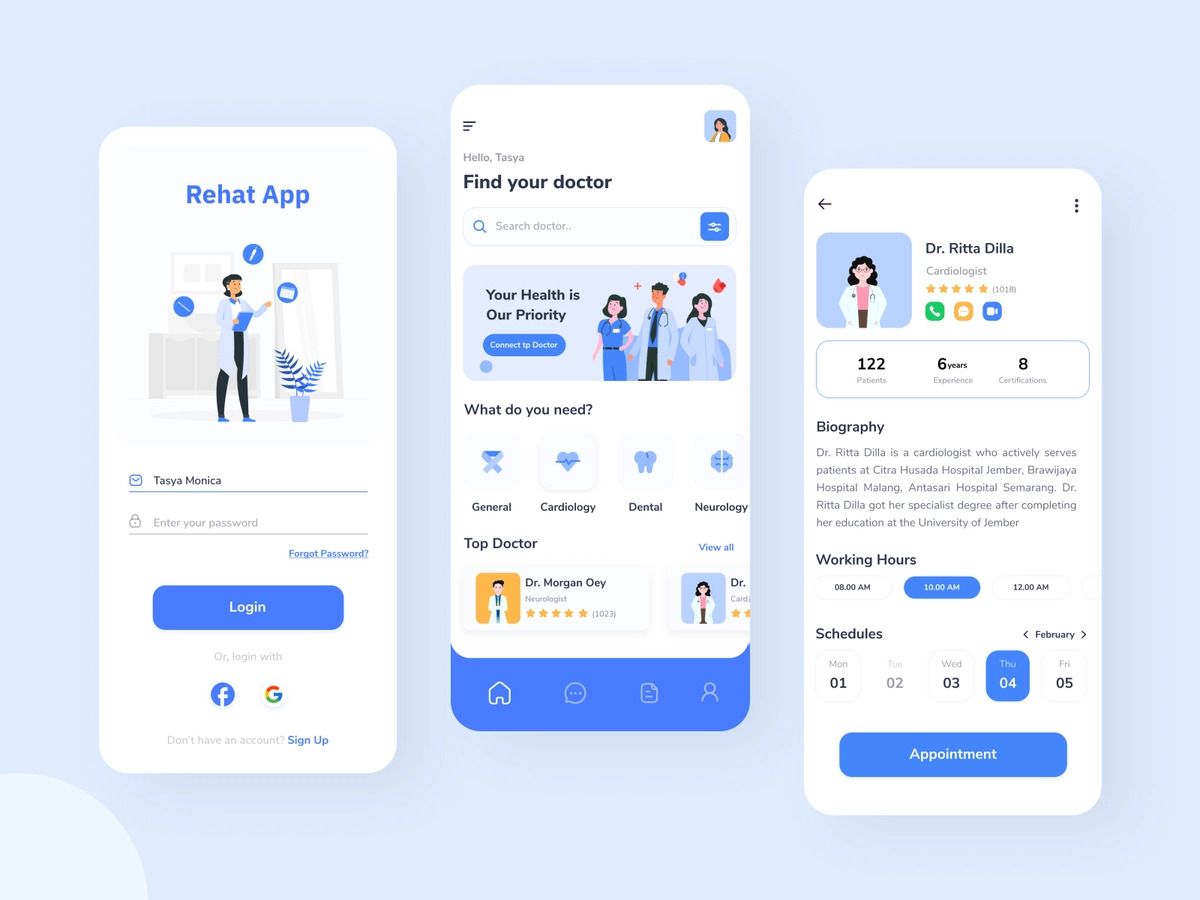
Health insurance companies can utilize IoT devices for remote patient monitoring (image by gandkurniawan)
But before getting the data, crucial for various applications including those pondering how to make a yoga app, it’s important to make your clients willing to share it. For that matter, you can use various gamification features and incentives like merch, discounts, special insurance plans, unique icons and stickers for the app, etc.
Navina: Case Study |
|---|
Navina was originally a tool for physicians that analyzes patient history by summarizing their previous tests and surgery (surgeries), highlighting the most important aspects. However, health insurance companies can use it to analyze how “risky” their potential clients are and adjust cooperation with them respectively, be it price, subscription plans, length of the contract, etc. |
To sum it all up, stakeholders benefit from applications of IoT in healthcare in some way or another. Depending on what a certain device serves, the advantages can vary from cost reduction, and asset management automation to significant treatment improvements and faster diagnosis.
🤖 IoT Healthcare Devices and Tech Stack Examples
To fully utilize the benefits of smart healthcare devices, it’s important to choose trustworthy and reliable providers, especially during the Internet of Things prototype development phase.
In this section, we'll discuss the various options available on the market and how to select the most suitable provider that aligns with your budget for IoT app development costs. In case you’re building your own IoT healthcare devices, it still could be useful to read through this section to get inspired by the ideas of other providers!
Fitness-Related Activity Trackers & Wearable Medical Devices
Generally, most fitness trackers and smartwatches can play this role without any additional devices. However, there are dedicated devices that track heart rate, saturation, calorie tracking, body composition, sleep, mood, and even signs of depression, etc. The main benefit of such devices is that they allow more precise measurement compared to regular fitness bands.
As for smartwatches with such functionality, there are multiple IoT solutions for healthcare from world-famous providers — Apple Watch, Samsung Galaxy Watch, Garmin, Nike Fuelband, Fitbit, and many others. There are also more affordable options from Xiaomi, Huawei or Wyze.

Wearable IoT devices enable remote patient monitoring and support the collection of healthcare data (image by Den Klenkov)
However, for medical applications, you might want something dedicated, something you can be 99,9% sure will measure precisely. A dedicated device for heart rate monitoring is provided by Polar, for example. What’s great about the Polar sensor is that you can connect it to other health IoT devices via Bluetooth (if you want to develop something similar, you should evaluate the BLE vs Bluetooth Classic effectiveness) and ANT+ (wireless data transferring protocols).
Plus, it doesn't necessarily have to be a wristband. Wahoo is one of those companies that offer chest straps for heart tracking.
Some companies offer dedicated tracking devices for various kinds of sports. Even though a lot of them are designed for running and cycling, you can definitely find something for any sporting activity. Garmin, for example, offers HRW-Swim chest straps for swimmers.
There are also examples of IoT in healthcare for tracking other health indicators:
- Saturation: Vive Health, iChoice. These devices are smart finger clips.
- Body composition: most smart devices in this category are smart scales — Renpho, Xiaomi, Wyze. We should mention though that there’s controversy within the community on how precise such scales can function.
- Sleep: Oura Ring, Sleepon, Sleepscore devices.
Patient Control & Remote Monitoring
Apart from monitoring generic health metrics, some patients, especially those using services from psychological therapy app development, require special monitoring due to their medical conditions, including chronic ones. Luckily, the IoT in the healthcare industry has enough devices to offer for most chronic diseases.
COPD and Asthma
Chronic obstructive pulmonary disease (COPD) and asthma are among the top 4 most prevalent chronic diseases (most healthcare-related research COPD or asthma on the list, depending on the region).
The main way of dealing with such diseases so that people can have normal lives is inhalers. Nowadays, the IoT industry offers multiple smart inhalers that work via a dedicated app. Let’s take a closer look at such IoT solutions in healthcare.

Connected inhalers with dedicated IoT medical applications can make life much easier for people with pulmonary diseases (image by Dmitry Lauretsky)
The first provider we’d like to mention is Digihaler. There are two smart inhalers from the company — AirDuo and ProAir. The first one is targeted at 12-year-olds or older to control asthma symptoms and prevent signs of pulmonary disease such as wheezing, for example. ProAir is suitable for a younger audience (4+ years old) and has a special emphasis on preventing and relieving bronchospasms.
The functionality includes keeping track of inhaler usage frequency and inhalation strength, getting instant feedback based on such data, and visualizing dynamics to track deteriorations as well as improvements.
Another stakeholder who works with both asthma and COPD is Propeller. The main difference from the previous provider is that the company offers attachable sensors, meaning you can use them with any inhaler of your choice. The functionality of these IoT devices in healthcare varies from inhalation counter to analyzing reasons for symptom flare-ups.
It also offers location tracking to help you find your inhaler or sensor if misplaced, inhalation reminders, air quality analysis, and weather-based seasonal recommendations.
Diabetes
Diabetes is (sadly) another widespread chronic disease — over 450 million people suffer from this medical condition to a certain level. Luckily, the community is actively working towards improving an already existing supply of smart diabetes management devices. Let’s talk about what’s already available on the market.
As of now, one of the most revolutionizing Internet of Things technologies for healthcare is sensors inserted under patients’ skin, with or without insulin pumps. We’re talking about Continuous Glucose Monitoring (CGM) systems that allow measuring glucose levels every couple of minutes throughout the whole day.

Digital transformation through IoT-connected devices helps people with diabetes track their blood glucose levels (image by Eugeniusz Eudokimow)
Medtronic provides one of the classic CGM smart systems. The device is suitable for people with type 1 and type 2 diabetes. The functionality includes measuring glucose levels, predicting highs and lows, visualizing glucose level dynamics, etc. Additionally, clients can purchase insulin pumps that will automatically keep insulin at the needed level.
Omnipod also offers a whole insulin management system. The functionality is quite similar, tracking and controlling insulin levels, sending reminders, and so on. The amount of insulin that the device contains is enough for 3 days of continuous insulin issuing.
The next healthcare IoT provider we’d like to talk about is Eversense. The company has been one of the first to offer smart CGM systems with implantable insulin pumps. What’s unique about the device is that it can last for up to a year without having to reinsert it.
Surely, all the data can be shared with a doctor and used for further treatment plan improvements or supportive therapies.
Ingestible Sensors
Most of us would agree that getting such invasive examinations as colonoscopy isn’t the most pleasant experience. Fortunately, the IoT in healthcare has an alternative — small ingestible devices with sensors and cameras that allow doctors to diagnose patients without having to “invade” their guts.
The first provider we’ll talk about is the PillCam Colon 2 System from Medtronic. They offer a small capsule that scans, records and takes pictures of the colon. After getting the data, the device immediately transfers it to a computer or other device.
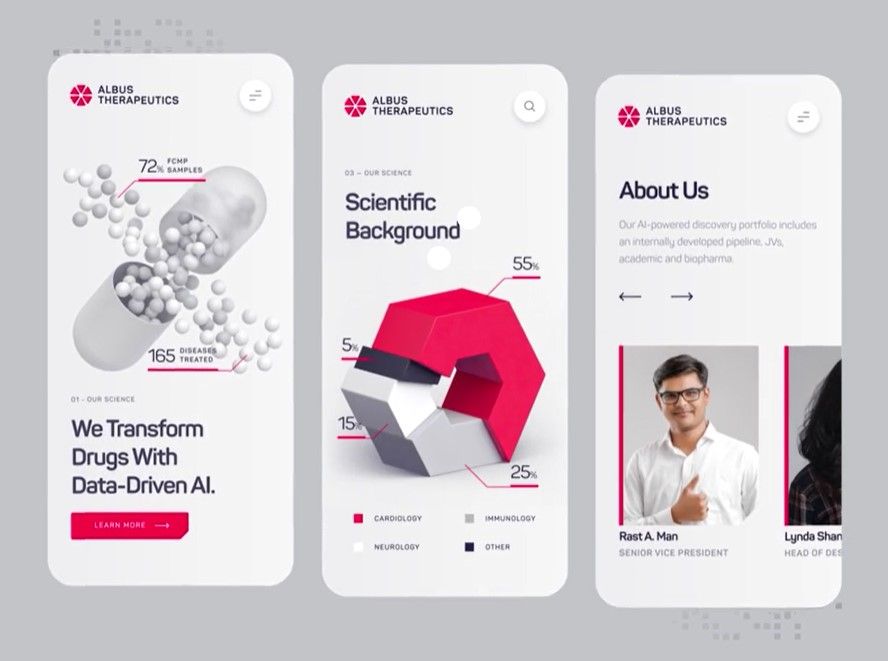
Ingestible sensors can collect sensitive data and assist in monitoring health conditions without requiring complex or invasive procedures (image by Samuel Oktavianus)
There’s a healthcare technology called Ingestible Micro-Bio-Electronic Devices (IMBED). It’s able to detect inner bleeding. The way such devices function is quite a complex scientific matter so we won’t get into detail here.
Long story short, the devices contain biosensors that generate light when coming into contact with a certain bacteria. The light detector in the device detects it and then commands the transmitter to generate data and send it to the dedicated IoT applications for healthcare on an external device.
You can take a look at the research we’ve used for this abstract by following this link.
Medication Intake Management
IoT healthcare devices help doctors ensure patients take their medications as prescribed, eliminating the need for constant monitoring.
Let’s talk about Pillsy, a smart pill bottle that works as an automatic dose-tracking device. The functionality includes sending reminders to take the meds, double dose alerts, notifying the caregiver which can be set up in settings, and location-based snoozing (if patients aren’t near their bottle, they’ll be notified once they’re in range).
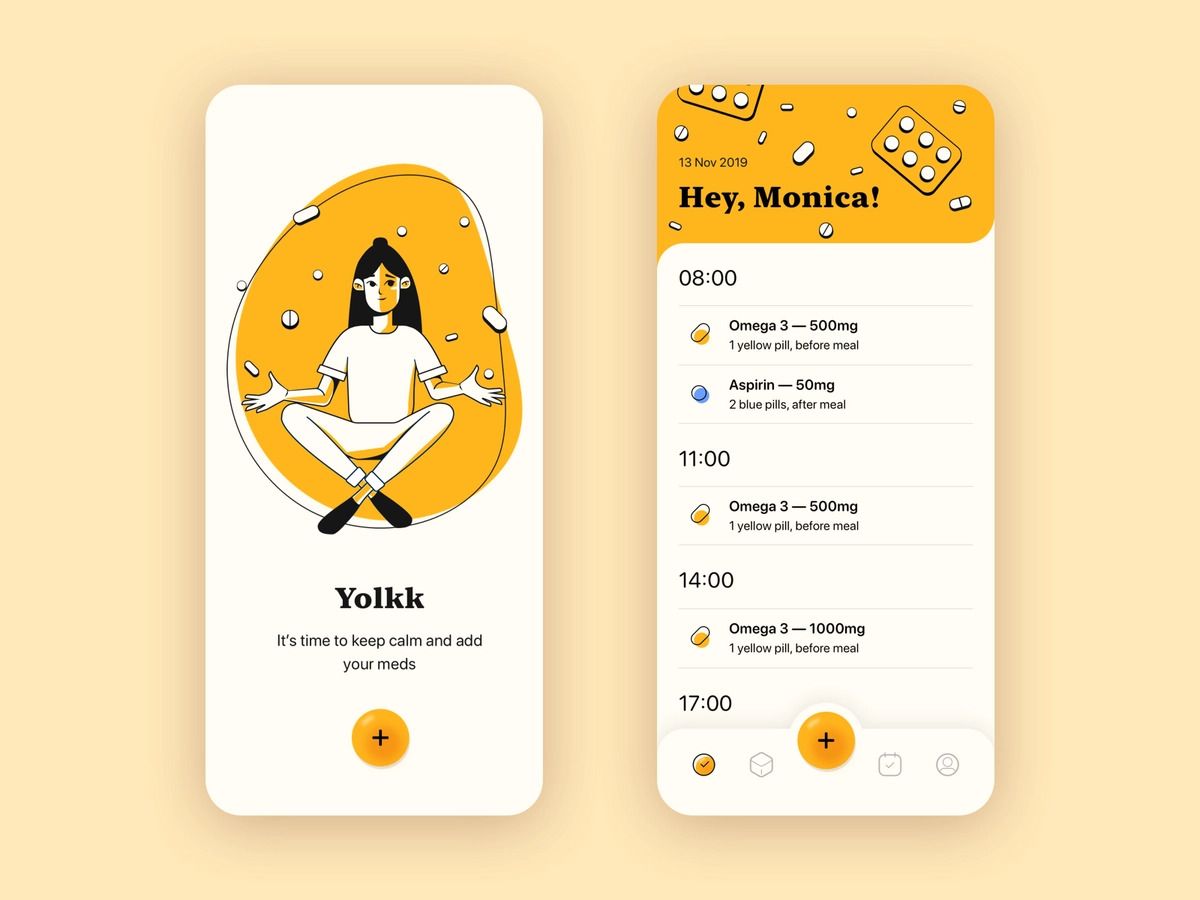
Medical facilities can use drug intake management systems to make caring for elderly patients easier (image by Olena Brusenska)
Another example of IoT use cases in healthcare is the automatic medication dispenser from PharmRight called Livi. When it’s time to take the medication, the green button is supposed to light up (of course, the timing can be set up according to the doctor’s prescription).
After users press the button, the medication is dispensed. It has several dispensing modes and enables high-level customization, allowing loading up doses that should last up to 90 days of daily pill intake.
Elderly Care
Technically, a lot of devices listed above can be used for elderly care, even though it’s not what they initially were designed for. Heart rate trackers can function as devices for preventing heart failures, especially strokes, which are more likely to happen to seniors.
Medication intake management systems are also particularly suitable for older adults, as they often experience memory issues more frequently than younger people.
Ingestible sensors are also an excellent solution for working with the elderly, as pain tolerance tends to decrease with age (research paper on this statement). Physicians can avoid painful procedures by leveraging innovative IoT solutions for healthcare.

IoT healthcare can significantly improve elderly care and streamline equipment management (image by Excellent WebWorld)
Additionally, you can partner with smart emergency button providers (like DevelCo or Akuvox) as part of the elderly care business, if that’s your case. Such Internet of Things medical devices can be set up to send emergency signals to ambulances, police, other institutions, or designated users. This will notify them that the person requires immediate medical help if the person isn’t able to make a call, for example.
Clinics Management & Automation of Administrative Processes
Apart from monitoring and controlling patients’ health, there are many other areas where healthcare IoT devices can be very useful. The one we’d like to talk about is automating administrative tasks and asset management.

IoT devices can significantly enhance data security, assist clinics in managing connected devices, reduce healthcare costs, and automate healthcare operations (image by Nasir Uddin)
The first provider we’ll talk about is Fabric which offers chat-based AI products. It can be used to collect clients’ medical history, navigate them through available services, send follow-up questions regarding their well-being and treatment effectiveness, etc.
You don’t have to look for separate providers for different management purposes — multiple vendors offer complex solutions that include the most necessary devices for asset management.
Let’s take Zebra as an example. Their offer includes mobile computers to perform management, smart RFID sets (readers, sleds, and antennas), desktop and industrial RFID printers, etc.
CenTrak is another provider that has a whole lot of healthcare IoT solutions for asset management, hygiene control, infant security, environmental monitoring, emergency and nurse call automation, infection control, etc.
In IoT for healthcare, the importance of connectivity cannot be overstated. By integrating various IoT devices, from wearable medical trackers to smart inhalers, healthcare providers can enhance patient care, streamline monitoring, and reduce the need for invasive procedures. The seamless connectivity of these devices enables real-time data sharing, improving decision-making and outcomes.
🏥 How to Choose Suitable IoT Healthcare Providers?
Finding the right partner with high-quality Internet of Things medical devices is as important as perfectly planning out your own business. We’d recommend taking the following factors into account when looking for a partner:
- Price range.
- Post-contract support.
- Diversity of services.
- Reviews, feedback, and references.
- Onboarding guidance & others.

IoT device providers must ensure robust security levels (image by Ramy Wafaa)
Apart from that, you might want to partner up with companies that have extensive experience in your business area and with your target audience. In case the company offers multiple IoT solutions in healthcare as a package, make sure that it’s possible to buy them separately so you don’t have to pay for unnecessary devices (might seem obvious but not all companies have such an option).
As much as we'd love to pinpoint the best provider for your use case, further research is essential. If you need more tailored assistance in finding an Internet of Things development company, don’t hesitate to reach out to us!
💼 IoT in the Healthcare Industry: Our Expertise
Our company has quite extensive expertise in integrating IoT healthcare devices with our clients’ solutions. So, in this section, we’ll talk about SportPlus, STEPR, and FitTracks, providing you with valuable insights about these solutions.

SportPlus enables users to manage their equipment and track health data within the app (image by Stormotion)
SportPlus provides their clients with exercise machines and equipment with Bluetooth Low Energy (BLE) modules, meaning that you can control them remotely using the dedicated SportPlus app.
The BLE integration within the modules using React Native BLE collects users’ health data such as heart rate, calorie count, exercise history, dynamics of health metrics, etc. These modules then send the data to the app so users can conveniently access it and discuss it with their physicians if necessary.

The SportPlus app offers users advanced analytics for their workouts (image by Stormotion)
However, before getting such health data was possible, we needed to make the app compatible with all of the devices. Initially, most of their fitness devices have different protocols (in other words, language that allows data exchange between machines and humans).
Luckily, each device had an app developed specifically for it. Thus, we were able to collect the data that was generated while using the exercise machines with an already functioning app, find out what protocol is used in each separate case, and set up the SportPlus app accordingly.
In the realm of IoT use cases in healthcare, STEPR showcases how fitness technology can bridge the gap between physical activity and health monitoring. Its compact stair-climbing machines support heart rate monitor straps, enabling users to track real-time cardiovascular data during workouts.

STEPR’s stair-climbing machines integrate advanced IoT-enabled solutions, to deliver a comprehensive workout and health-tracking experience (image by Stormotion)
The Android-based console app syncs with Bluetooth-enabled medical devices like heart rate straps, providing live insights into heart rate, steps per minute, calories burned, and more — all displayed on a unified dashboard. This integration not only enhances workout safety but also aligns with healthcare IoT trends, helping users monitor their health proactively.

STEPR seamlessly integrates with a heart rate monitor strap that allows users to track their health during workouts (image by Stormotion)
To ensure seamless functionality, we overcame challenges like Android’s security restrictions and designed an intuitive UI with large, tappable elements, perfect for use during workouts. The app also supports real-time metrics alongside entertainment content for a comprehensive and engaging fitness experience.
Our expertise in healthcare tech extends beyond IoT, as demonstrated by our collaboration with FitTracks. This fitness app offers voice-guided workouts tailored for beginners and advanced users, encouraging a lifestyle shift toward long-term wellness.
FitTracks apart is its recognition by the German government as a provider of prevention courses. Users can benefit from up to 100% cost reimbursement through their health insurance, making it an impactful tool for promoting preventive healthcare.

FitTracks provides voice-guided workouts that are approved by the German government (image by Stormotion)
Our role in the project included developing a seamless, user-centric app consistent with FitTracks’ website design while ensuring accessibility across iOS and Android platforms using React Native. The app features online and offline courses, enhanced with photos, videos, and voice guides from qualified trainers, supporting users in maintaining a healthy lifestyle.
Our expertise in applications of IoT in healthcare and fitness projects highlights how the right technology can transform fitness devices into powerful tools for health monitoring, empowering users to take charge of their well-being.
Ready to enhance your healthcare solutions with IoT? Contact us today to learn more about our expertise and how we can help bring your ideas to life!
❓ FAQs on IoT in Healthcare
To provide you with more details on the topic, we’d like to cover some generic questions on this topic.
# 1: How to Deal with Patients’ Data Privacy?
An important matter when working with the digital medical data, especially related to medication adherence, is ensuring that you use it in compliance with applicable data privacy regulations. Some of the most important ones for healthcare businesses are GDPR and HIPAA.
Let’s talk about GDPR, which stands for General Data Protection Regulation. It
wasn’t created for the healthcare industry specifically but still applied to any vendor that gathers data on EU citizens, even if the vendor itself is located outside of the Union.
This presentation visualizes some of the most important aspects of GDPR and its principles.
Another important regulation is the HIPAA or Health Insurance Portability and Accountability Act. It standardizes health-related information protection and its management in the USA. It includes what treatment patients get prescribed, their condition itself (including its future improvement/depreciation), etc.
We have an article where we review these two regulations (plus PIPEDA) in detail and discuss how to comply with them. Feel free to check it out if you'd like more information on this topic.
# 2: Is Building Your Own IoT Device Worth It?
To put it simply, our team believes that there are plenty of reliable third-party providers of IoT healthcare devices on the market so that you don’t have to build your own. However, it surely is an option. Let’s talk about what you might need for it.
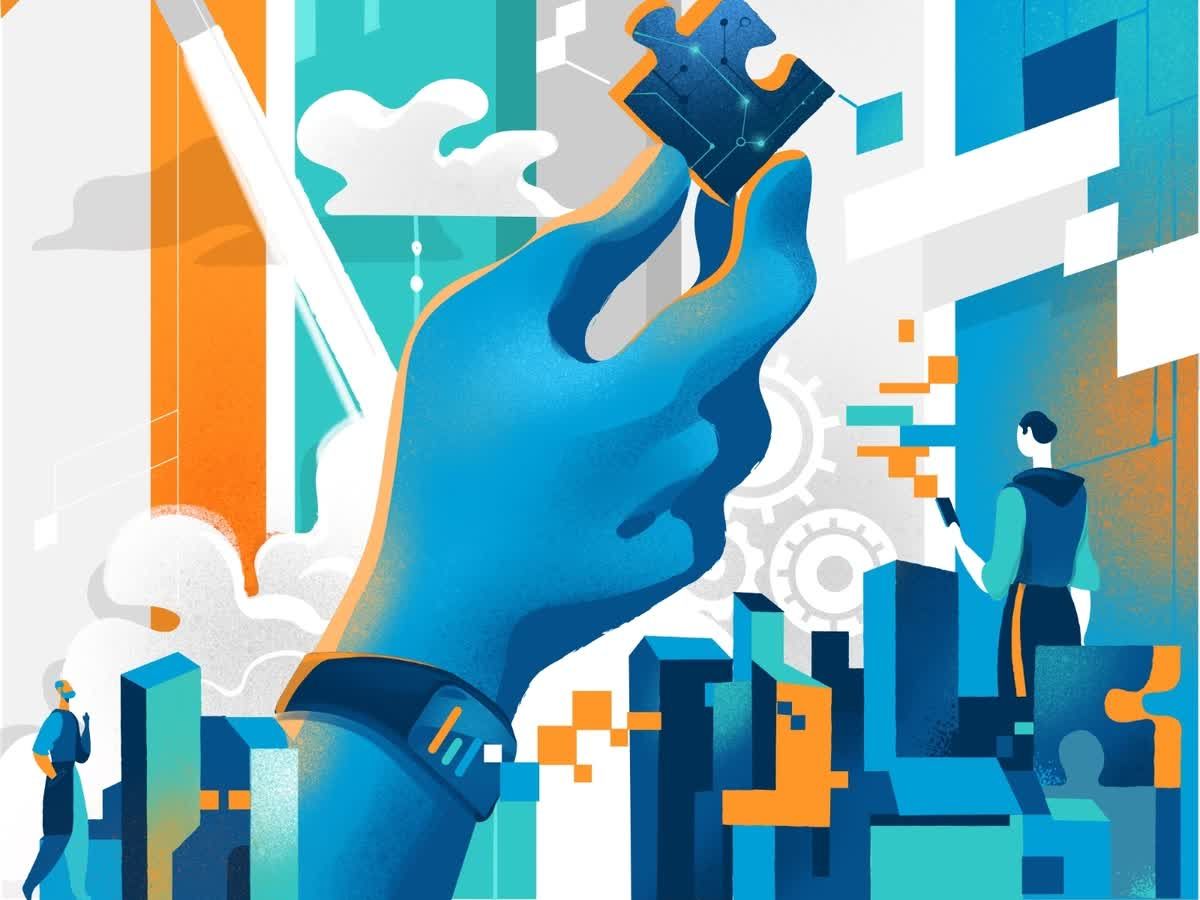
If you decide to build your own IoT device, you'll likely need to choose a cloud platform (image by Hurca!™)
To build your own IoT healthcare device, you’ll need to:
- Obtain hardware components like sensors and microchips.
- Ensure each component is of high quality.
- Have technical and coding expertise.
- Implement protocols (such as BLE) to enable communication between your device and the app.
These are only a couple of actions — there’s much more to that. By partnering with a certain provider, you significantly reduce time-to-market and reduce costs.
But of course, there are use cases when building your own device is the only option. For example, when there’s no such device on the market and you want to bring something unique to the market.
At the end of the day, it’s always up to you which way to go. As a development company specializing in IoT solutions for healthcare, the Stormotion team would gladly help turn your vision into reality!
💡 Takeaways
The IoT is revolutionizing healthcare by enabling better patient care, operational efficiency, and cutting-edge medical applications. Let’s summarize the main points:
- IoT systems in healthcare use interconnected devices, data digitization, cloud migration, and advanced analytics to improve patient outcomes and streamline care.
- IoT offers benefits such as real-time health monitoring, early diagnosis, and cost-effectiveness. However, challenges like data security, integration issues, and high implementation costs must be addressed.
- IoT solutions in healthcare span patient wearables, hospital management systems, remote patient monitoring for physicians, and personalized insurance plans.
- Examples of health IoT devices include smart inhalers for asthma, continuous glucose monitoring systems for diabetes, and ingestible sensors for non-invasive diagnostics.
- Opting for trusted third-party IoT device providers can save time and ensure high-quality solutions. For tailored features or innovative ideas, developing your own IoT healthcare devices and apps can provide a competitive edge.
Ready to bring IoT in healthcare solutions to life? Whether you choose to partner with a trusted provider or develop your own systems, the key lies in crafting secure, patient-focused, and scalable innovations. Let us help you navigate the journey to transform healthcare with IoT!
Our clients say
![Stormotion client Alexander Wolff, CPO from [object Object]](/static/a16ba3c9580effc3ab9a68d115eadffe/b0e74/alex.png)
When I was working with Stormotion, I forgot they were an external agency. They put such effort into my product it might as well have been their own. I’ve never worked with such a client-focused company before.
Alexander Wolff, CPO
Sjut
Was it helpful?
Questions you may have
Take a look at how we solve challenges to meet project requirements
How does IoT improve patient care and outcomes in healthcare?
IoT devices used in healthcare enable better patient monitoring and allow individuals to take better care of their health. They support remote monitoring of patients by healthcare professionals, providing a 24/7 overview of patients' health to ensure treatments are effective and address any issues quickly.
What types of medical devices and equipment can be integrated with IoT technology?
IoT technology can be integrated with a wide range of medical devices and equipment, including wearables like bands, bracelets, rings, headbands, glucometers, contact lenses, and even subdermal devices. These devices can monitor heart rate, blood pressure, glucose levels, and various activity metrics.
How does IoT enhance remote patient monitoring in healthcare?
Health IoT devices allow healthcare professionals to remotely monitor patients' responses to treatments, track health metrics continuously, and receive alerts for immediate medical attention needs. This facilitates a more responsive and personalized healthcare approach.
What security measures are in place to protect patient data in IoT-enabled healthcare systems?
Compliance with data privacy regulations such as GDPR and HIPAA is crucial to protecting patient data. These regulations standardize the protection and management of health-related information, ensuring data privacy and security in IoT-enabled healthcare systems.
Can you provide examples of successful IoT applications in healthcare?
Examples include smart inhalers for asthma and COPD management, Continuous Glucose Monitoring (CGM) systems for diabetes, and ingestible sensors for gastrointestinal health monitoring. These applications demonstrate the diverse and impactful use of IoT in healthcare.
How does IoT improve efficiency and workflow within healthcare institutions?
Healthcare IoT devices play a crucial role in automating administrative tasks, managing assets, and improving data security. Their importance lies in their ability to track medical equipment, control hygiene, manage inventory, and automate patient onboarding, all of which significantly enhance operational efficiency in healthcare settings.
What role does artificial intelligence (AI) play in conjunction with IoT in healthcare?
Artificial Intelligence complements IoT by analyzing data from IoT devices to provide insights, predict health trends, and personalize patient care, enhancing the effectiveness of IoT applications in healthcare.
How do healthcare providers ensure the privacy of patient information in IoT ecosystems?
Healthcare providers ensure privacy by adhering to strict data protection regulations like GDPR and HIPAA. These regulations govern the collection, storage, and use of personal health information and ensure that patient data is handled securely and responsibly.
What impact does IoT have on the cost of healthcare services?
IoT reduces healthcare costs by improving operational efficiency, streamlining patient monitoring, minimizing hospital readmissions, and enabling early detection of health issues. This helps lower the need for expensive treatments and reduces administrative overhead.
What are the potential future developments and trends in IoT for healthcare?
Future developments of IoT devices in healthcare may include more advanced wearable devices, deeper integration of AI and computer vision for data analysis, and wider adoption of IoT for personalized healthcare. Innovations like implantable sensors and smart medication management systems indicate the growing trend towards more integrated and intelligent healthcare solutions.
Read also


